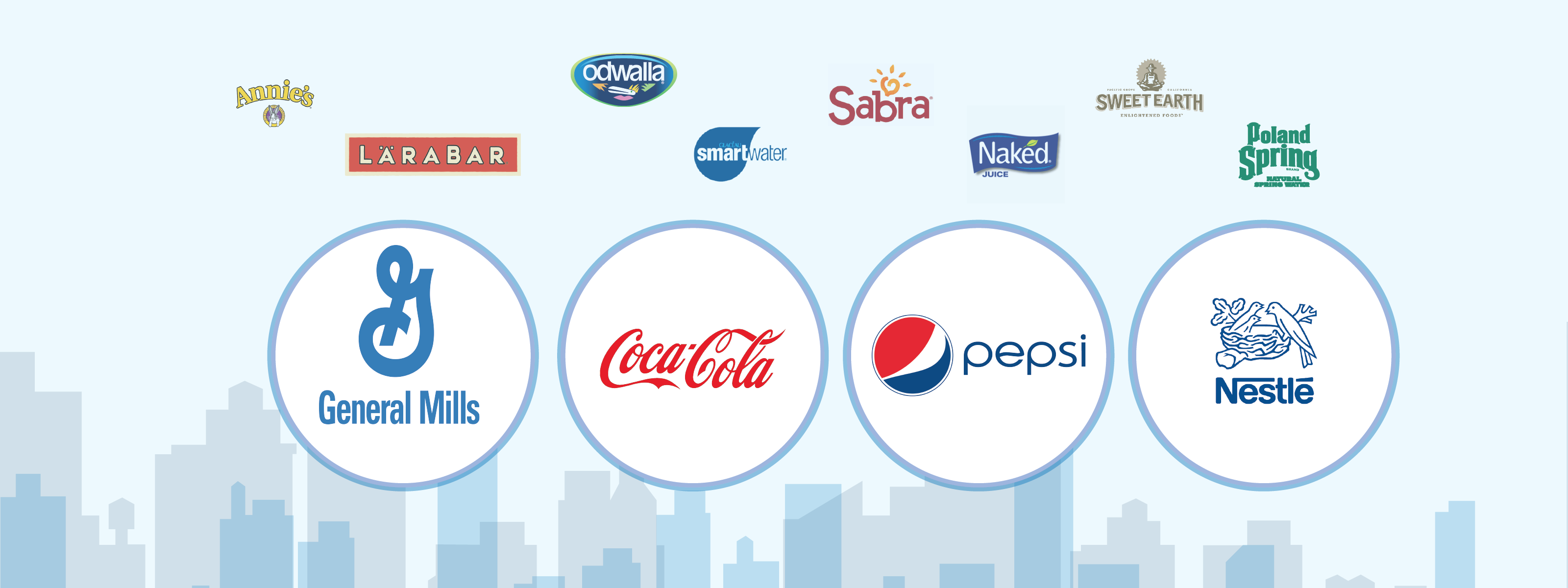Did you know Annie’s, and Larabar are owned by General Mills? Or that Smart Water, Odwalla, and Zico are owned by Coke? Even Sabra and Naked Juice are owned by PepsiCo. If we don’t actually know about it, what is the purchase objective? Is it to help the image of big brands with the ever important millennials and Gen Z, or is it just for sales?
Clearly, the health-conscious consumer holds a lot of the cards in food today. So much so that big brands, like Smucker, General Mills, and Nestle, are in a frenzy to buy up the smaller healthier brands that health-conscious consumers love, and also in a hurry to unload the brands that add to the legacy brand image of highly processed and preserved foods.
In July, Smucker decided to sell it’s U.S. baking unit including Pillsbury to focus on innovations in areas like coffee, peanut butter, and other snacks that have the potential to be marketed as “healthy”. General Mills also said it wants to divest 5 percent of its portfolio to pursue growth elsewhere, including in cereals and yogurts with less sugar. Even Hershey’s, known almost exclusively for their chocolate, is selling off a potato chip product and trading it in for a brand called Smart Puff, a gluten-free and preservative-free baked snack, which will operate out of out the the company’s “better for you hub” in Austin with other brands you might not associate with Hershey, Skinny Pop, and Oatmega.
Nestle has made the most obvious shifts and has been at it for the longest of the legacies.
They are committed to reducing sugar, sodium, and saturated fat content in the brands they already have and are also acquiring new brands like Sweet Earth, a maker of frozen meals, burritos, and burgers using meat substitutes. By 2020, Nestle will add 750 million portions of vegetables and 300 million portions of grains, pulses, and bran to its products. The Nestle website overtly shares a “nutrition, health and wellness strategy” that highlights three beliefs they will incorporate into all of their products: pleasure and health, eating with moderation and balance, and transparent communication.
The global healthy snack market size was valued at $21.1 billion in 2016 with a 5.1% compound annual growth rate, which means $32.8 billion by 2025. That growth is outpacing overall food and beverage sales growth in the same period, while brands like Kraft and Kellogg are seeing their sales decrease by between 1 and 2% each quarter. Those are some pretty scary statistics for brands that seemed like they were untouchable just a few years ago.
The growth numbers also mean there are many opportunities for this acquisition strategy to deliver…when it is done well.
That being said, big brands need to proceed with caution when it comes to the growth of the smaller guys. They simply can’t treat them like the legacy brands already in their portfolio. Kellogs purchase of Kashi is an example of a cautionary tale. After the acquisition, many of Kashi’s original customers felt betrayed because Kellogg’s started making the Kashi cereal with inferior ingredients that were not organic and contained GMOs. They also closed the company’s headquarters in San Diego, losing many of the employees and the brand’s spirit. They went too mainstream way too fast and lost 35% of their market share. They are now backtracking to try to recapture what already existed in the past.
If you’re a big brand looking for growth through small brands or a small brand also trying to grow to get the attention of the big guys, we can help. Let’s talk.

